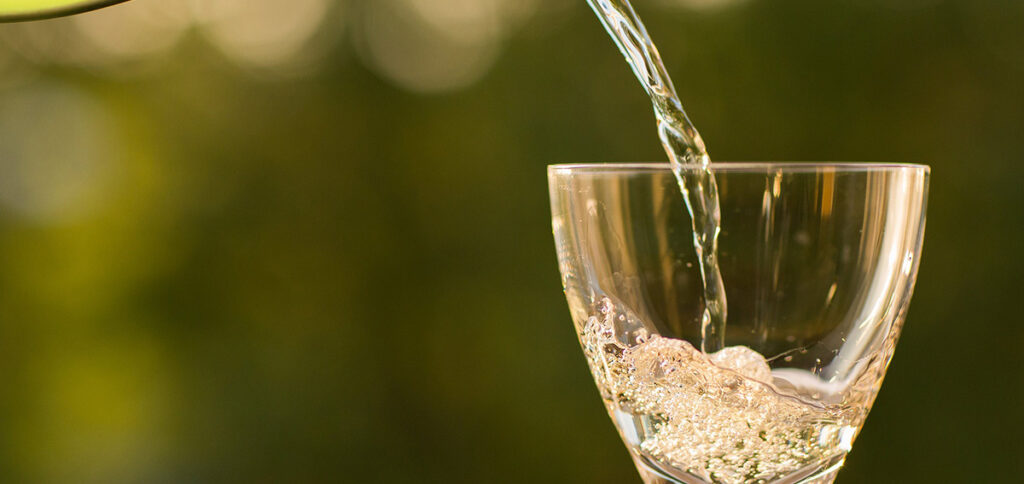Frizzante, secco and prosecco: What’s the difference?

The terms prosecco, frizzante and secco are often used interchangeably; however, there are simple regulations for the official designation of the beverages, depending on how they are produced and the respective amount of carbon dioxide in the bottle.

Prosecco: both a grape variety and a locality
Prosecco refers to an Italian-made wine. The wine bears the name of the Prosecco region where it is produced – at least, that has been the case ever since the revised version of the production guidelines went into effect in 2009. In order to protect the designation prosecco, those responsible opted for the path of geographical origin. The Italian region of Friuli was renamed and has since adopted the name of the town of Prosecco.
Before the new legal regulation, Prosecco referred only to the designation of the grape variety itself, meaning that anyone who grew Prosecco grapes in their vineyard could have also produced a wine of the same name. Many people would have happily taken a slice of the booming prosecco business.
Therefore, today, there are two wines bearing the name: prosecco DOC, which primarily comes from the planes between the rivers Piave and Po, and prosecco DOCG, which is cultivated in the hilly region between the towns of Conegliano and Valdobbiadene in the Alpine foothills.
Prosecco as a sparkling, semi-sparkling and still wine
Unlike champagne, which is only ever a sparkling wine and in accordance with EU regulations, must have a carbon dioxide pressure of more than 3.5 bar, prosecco can be sparkling, semi-sparkling or still. However, with a production volume of around 300,000 bottles, still prosecco wine has a very limited market presence and is only enjoyed by locals in the region.
Sparkling wine production, meanwhile, is much more important, and accounts for around 85 percent of prosecco production. Around 15 percent of prosecco is used to produce semi-sparkling wine. This is precisely where the terms “prosecco” and “frizzante” cross paths, as the Italian term “vino frizzante” is a synonym for semi-sparkling wine. Moreover, the word “secco” also often appears in place of frizzante. Unlike prosecco, secco is not a protected term and can therefore be used regardless of a wine’s place of origin.
At the turn of the century, fewer than 100 million bottles of prosecco were being produced. Now it stands at the pinnacle of Italian winemaking, with more than 450 million bottles of prosecco DOC and around 90 million bottles of prosecco DOCG, representing significantly more bottles sold than that of champagne.
The lower the carbon dioxide content in a frizzante, the less the drink will fizz and tingle compared to sparkling wine. While most semi-sparkling wines contain exogenously introduced technical carbon dioxide, the carbon dioxide in sparkling wine comes from the primary or secondary fermentation.
For trade and consumption however, there’s a more important distinction, namely the tax burden. In Germany, sparkling wines such as champagne and prosecco incur an additional tax that does not apply to semi-sparkling or frizzante wines. Therefore, the largest share of the nearly 80 million bottles of prosecco frizzante are sold in countries like Germany and Austria where sparkling wines raise extra tax, while semi-sparkling wine is allowed to be sold without this complication.
Is secco always dry?
While the term “secco” technically refers to a dry product in Italian, with most containing far less than 10 grams of residual sugar per liter, when it comes to semi-sparkling wines, frizzante and seccos have different legal regulations that apply to their flavor details. If a frizzante or secco boasts the word “dry,” the residual sugar content may not exceed 35 grams per liter, which produces a taste that’s anything but dry and bitter. The term “semi-dry” applies to 33 to 50 grams per liter and has a noticeably sweeter taste. Then there is the very sweet “mild” designation, with residual sugar in above 50 grams.
Those who would like to learn more about the differences and characteristics of sparkling and semi-sparkling wines and their production will find everything they need at drinktec from September 12 to 16, 2022, at the Munich exhibition center. Are you still looking for a platform to showcase your innovative products and services in this segment? Then join us at the next drinktec.
